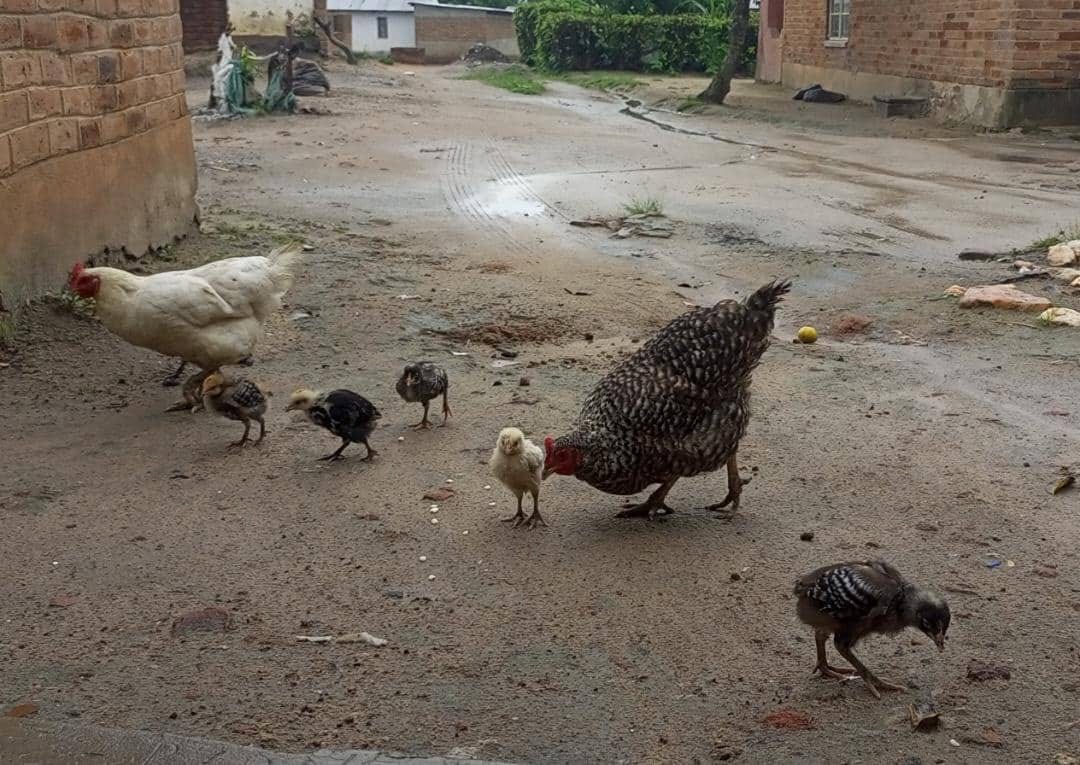Modern Poultry Farming Methods Increase Flock Size and Profits for Mzuzu Farmers
In contrast, indigenous chickens, which are characterized by poor productivity, fewer laying cycles, and a lack of vaccination, are managed in a free-range system with a supplementary feed.
Malawi: Modern poultry farming methods like early chick weaning, supplementary feeds, and proper vaccination are helping farmers increase their flock in Mzuzu, according to a Commercial Agriculture for Smallholders and Agribusiness report in 2020, writes Victor Musongole.
In contrast, indigenous chickens, which are characterized by poor productivity, fewer laying cycles, and a lack of vaccination, are managed in a free-range system with a supplementary feed of mainly maize bran.
Farmers rarely purchase commercial feed or seek veterinary services for their birds, unless there is an outbreak of disease.
Initial breeding chickens are obtained from friends, which are some of the factors affecting poultry farming.
These practices have resulted in fewer animals reaching maturity, slow growth, numerous diseases, and fewer eggs, leading to reduced profits for farmers.
Some farmers in Mzuzu have adopted new methods to reduce mortality in their flock, including weaning early, supplementing feeds, proper vaccination, and improving the breed.
Gibson Kamanga, a poultry farmer based in Mzuzu, is one of these farmers who weans chicks early.
"I give supplementary feeds to my local chickens, and it improves growth, and if I wean chicks earlier, their mothers do start laying eggs within two weeks, so this is really helping me as a commercial farmer. I have also introduced exotic cocks to improve the growth rate," Kamanga said.
However, Kamanga advises farmers to be cautious when adopting some of these modern methods, saying they need proper training and a good approach.
"Those who want to try these methods should ensure the chicks are brooded in favourable conditions (good brooders) to avoid losses. When using charcoal burners, proper aeration is needed to avoid suffocating chicks, and the feeds should be balanced," Kamanga emphasized.
Juliet Nyasulu, a youthful farmer, also echoes Kamanga's words.
Nyasulu says she has increased the number of her chicks reaching maturity after adopting the weaning method.
"At first, I was losing a lot of my chicks because if a hen hatches 15, only 3 or 4 reached maturity. Most were attacked by diseases and predators, but since I started early weaning, I don't lose my chicks. Almost all chicks reach maturity. If I wean, I make sure they are put in brooders. I feed them chick mash and follow all vaccinations. I advise my fellows to take this as a business," said Nyasulu, a 28-year-old farmer.
Animal breeding expert Timothy Gondwe from the Lilongwe University of Agriculture and Natural Resources has urged farmers to adopt modern poultry farming methods in order to make profits from their poultry animals.
Gondwe singles out proper housing, feeding, management, and diseases as some of the major factors hindering poultry farming from developing.
"Farmers can supplement foods to their local chickens, control inbreeding, which affects growth by changing cocks frequently, and improve their breeds by introducing exotic breeds like Kroiler, Sasso, Mikolongwe, which can adapt in free range and give more eggs and meat, and they have high feed conversion rates," Gondwe said.
"We are advocating for farmers to follow vaccination schedules, supplement feeds, and brood their chicks to allow hens to lay in order to increase their numbers.”
According to the Population and Housing Census of 2018, about 1.3 million smallholder households keep chickens.



